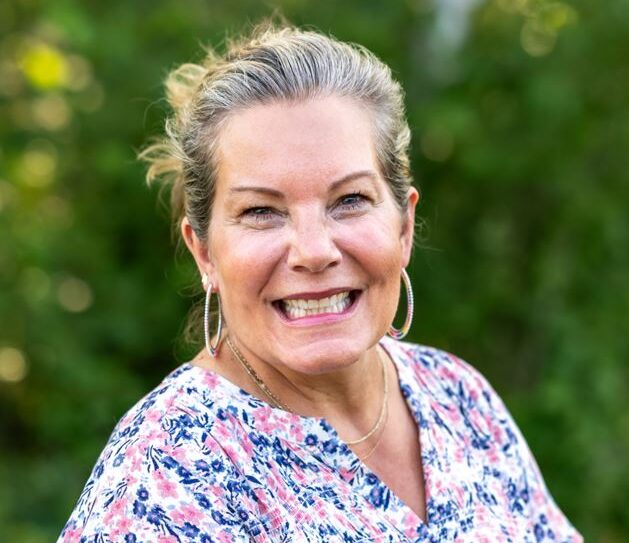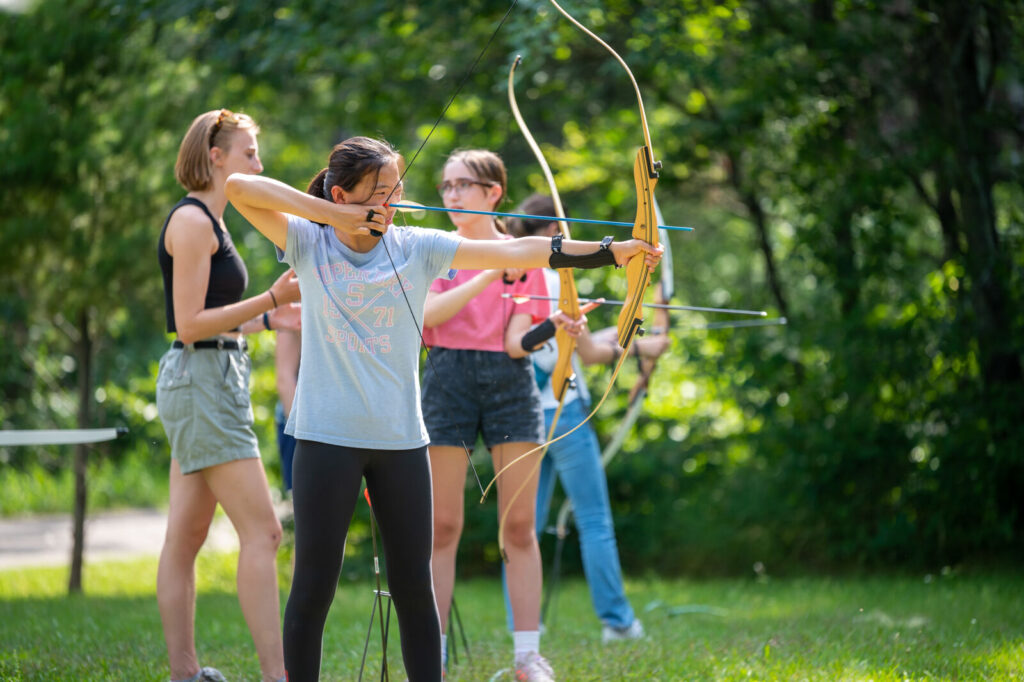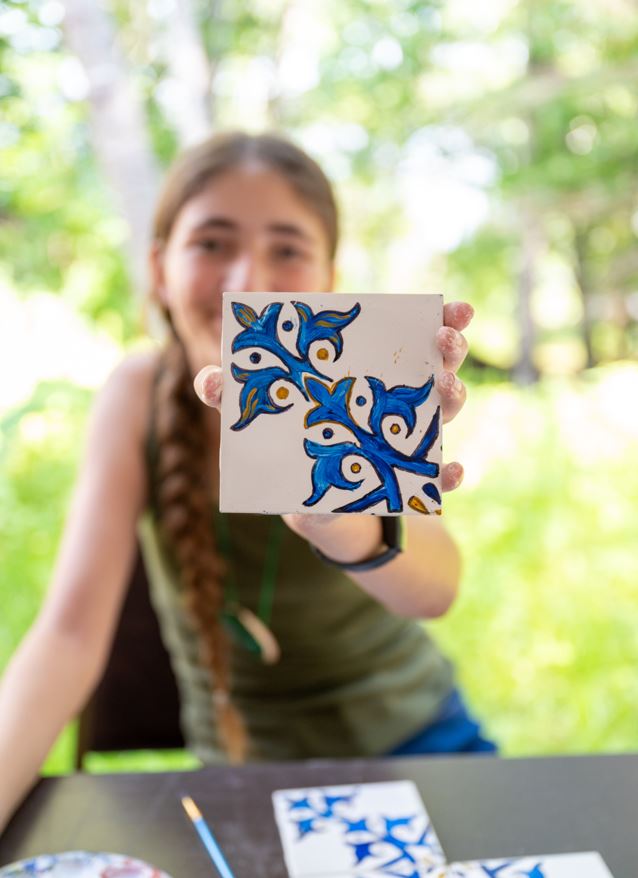Photos Provided by Concordia Language Villages
Just 130 or so miles outside of Fargo, a set of villages are giving individuals a linguistic and cultural experience through immersive language programs. In partnership with Concordia College, this regional initiative, aptly named “Concordia Language Villages” brings learners from all walks of life to visit its villages and explore. With an innovative blend of immersive experiences, passionate instructors, and an unwavering commitment to fostering linguistic fluency and cultural understanding, the program promises a transformative journey that goes beyond traditional language learning boundaries.
Where conversation intertwines with culture and language skill and understanding blooms, students of the Concordia Language Village program embark on a language learning adventure unlike any other in the area. A majority of the students that the program serves are 18 and under, but it does have additional programming for adults—offering the experience of expanding one’s global horizon no matter what stage of skill or life they’re in. Students take a step beyond the confines of traditional classrooms and dive headfirst into a world of cultural intrigue.
This all-consuming learning experience is brought about by the 14 villages crafted by the program. While students are traveling to right outside of Bemidji, MN to the site location, as soon as they step into the village of the language they’re studying, they feel, speak, eat, and learn like they are in another country. Across almost 900 acres, with almost 4 miles of lake shore on Turtle River Lake, students live and explore bustling markets, lively mealtimes, authentic customs, and traditions. These camps create an environment where language learning becomes an immersive journey into vibrant culture.
Concordia Language Village’s Executive Director Mary Kosir joined the team at a time when the idea of immersing yourself in a hands-on experience seemed almost impossible. She started in October 2020, in the thick of it all, but the team and program reminded themselves why the opportunity for this kind of learning existed in the first place.
“The mission of the organization is to inspire courageous global citizens,” Mary said, “We do that through programming, primarily in person, but also virtual programming, that really has a unique philosophy and teaching emphasis around language and cultural immersion.”

Summer camps registrations opened on October 11, head to concordialanguagevillages.org/youth-village-life to learn more!
The program runs year round, offering programming in the summer and academic year. They serve anywhere from 3,000 to 4,000 students from all across the United States in the summer program, and during the academic year, September through May, the program offers a series of high school youth programs on the weekends, a number of adult workshops and adult language weeks, cultural weeks, as well as working with a number of military groups on intensive language training for critical languages like Russian, Chinese, Korean, Arabic, and Farsi.
“We really offer a wide array of languages and cultural experiences that immerse a person in the world of those different cultures,” Mary said.
But, what does immersing yourself in a language village really mean? Well, it really means fully engrossing yourself in the culture, to the point that it feels like a student is actually living in another community—and the program is offers you just that.
Upon arrival, which is by car, bussed in from the Twin Cities, or flown into the Bemidji airport, you enter your appropriate village— each have their own name—and leave doubts behind.
“If you were going to come to our German camp… whether you have five years of German or no experience at all in German, from the minute you walk through the doors of Waldsee, you’re going to be speaking German. As you can imagine, there is a lot of using our hands and gesturing and using pictures to illustrate what we’re talking about,” Mary said.
The first thing students do is create a nametag. They have students do this as a way to encourage them to forget any doubts or fears they may have about language learning by embracing this new “persona” for the period of time that they’re at camp.

Mary Kosir
Concordia Language Village’s Executive Director
In this program, the philosophy of the camps are run “The CLV way” with the following mission:
“A courageous global citizen lives responsibly by:
- Appreciating and seeking to understand diverse cultural perspectives;
- Communicating with confidence and cultural sensitivity in multiple languages;
- Respecting human dignity and cultivating compassion;
- Engaging critically and creatively with issues that transcend boundaries; and
- Advancing a more just, peaceful, and sustainable world for all.”


The students are essentially living a grand simulation—they experience cultural cuisine that’s appropriate to the language they’re learning in and shop in the village stores with the euro. Students figure out how to find the bathroom or their cabin and have mealtime and group lesson time with peers at their level, while still speaking and engaging in the language they’re learning. Mary said the camp utilizes the outdoors and tries to bring that experience into learning.
The camps bring an array of immersion so the students truly feel like they’re entering a new place, be it a week or two, or even a day. Mary said that about 95% of students come and stay for anywhere from one to four weeks, but the program does have day camps that run for five days a week, from 8:00 a.m. to 5:00 p.m., in just about all of the languages for those who may not be ready for an overnight experience or just want a taste of what it’s like.
Each village’s size varies per interest, Mary noted the largest village is usually the Spanish village, El Lago del Bosque, with hundreds of villagers throughout the season. The Danish program has about 35 and the Italian has about 70 students, and closer to the Spanish number, the Chinese and Japanese villages have about 200 to 250 villagers.
Concordia Language Village’s Stats!
The largest villages in the program right now are Spanish, French, and German, and after that it’s Japanese and Chinese. The fast growing village due to recent interest is the Korean language! The Norwegian program is very strong given it’s roots in the Minnesota area.
“There’s typically hundreds of students there all summer long in variety of programs that are all overlapping,” Mary said. “So that’s why we have such a high number of staff who are usually with us, and we usually we have about one staff member to every six villagers—so we have a lot of staff on site.”
Considering how many staff are needed to run a variety of camps across villages at the same time, it’s impressive that the program has a strong history in their 60 years of hiring native speakers—something that gives the language learning camp an edge to its competitors.
“Our staff is a mix of authentic Native speakers with those who may have learned the language in college or through study abroad or something like that,” Mary said. “[We find staff] through word of mouth, advertising, the work of previous staff, and through the contacts of our staff, including deans who lead each village. They’re getting word out to key heritage communities where that language is spoken, so that we can recruit effectively for those villages. It’s really a sizable effort, considering that this summer, we brought in 700 staff.”
While the program has been around for over 60 years, in the past few years it has underwent and faced changes and challenges as did the rest of the world. As with just about any other field of work that involves youth—the program has taken note of the weight on their students’ mental well-being in those recent years.
“We’re a lot more in tune with the mental health and wellness of our youth, and not only our youth, but our staff, particularly coming out of the pandemic. We’ve certainly seen that we’re dealing with an increased level of mental health challenges with our villagers, so we’re spending a lot of time making sure that we’re being intentional about our orientation, and as we’re training staff, and counselors to work with the youth as they’re going to be dealing with some challenging situations—some things that maybe weren’t as prevalent, even a decade ago, as they are now.”
Did you know?
High schoolers can earn school credits by participating in Concordia Language Village’s high school credit program? The four-week summer programs are high school credit programs, meaning if a student participated they can earn 180 hours of language instruction over those weeks-which is comparable to one year of high school credit! Learn more at concordialanguagevillages.org/youth-village-life!
Mary said that the program is being more intentional as they grow, so that the health and wellness aspect of the organization has appropriate time and investments in people and in services.
“While we’re not a therapeutic camp, we’re working to acknowledge and realize that we’re living in a time and a place where those challenges are part and parcel with just being a human being, so the navigation of that is really a priority of ours,” she said.
The uniqueness of the program paired with innovative structure is at the forefront of immersive language education. Students enter an environment that fosters genuine connection, profound understanding, and global awareness matched only by visiting the countries themselves! Learn more about the programs at concordialanguagevillages.org!
Concordia Language Villages
8607 Thorsonveien Rd NE
Bemidji, MN 56601
218-586-8600
concordialanguagevillages.org
Facebook | /ConcordiaLanguageVillages
Instagram | @conclangvillage
Twitter | @ConcLangVillage



